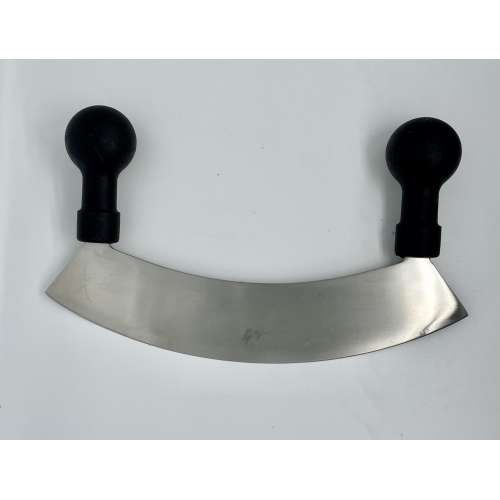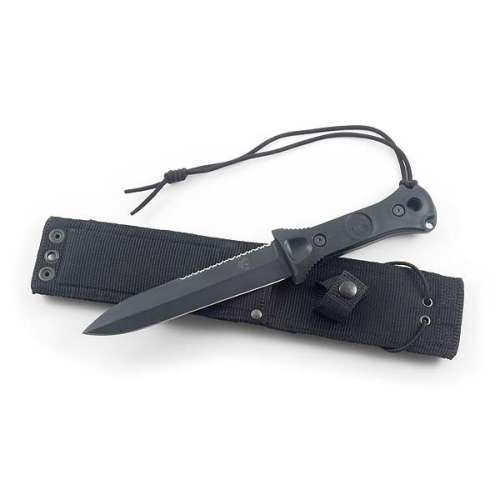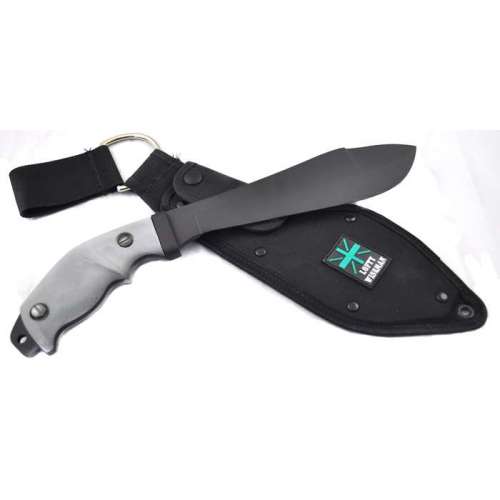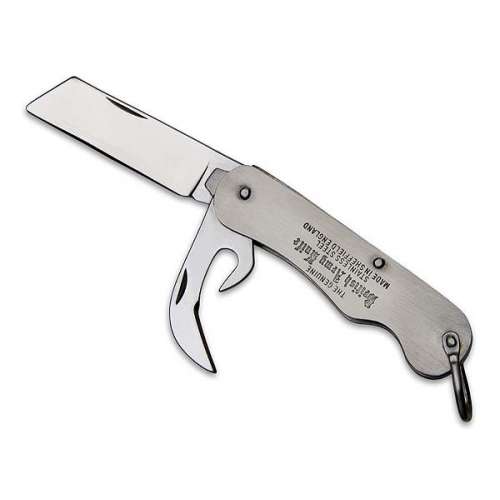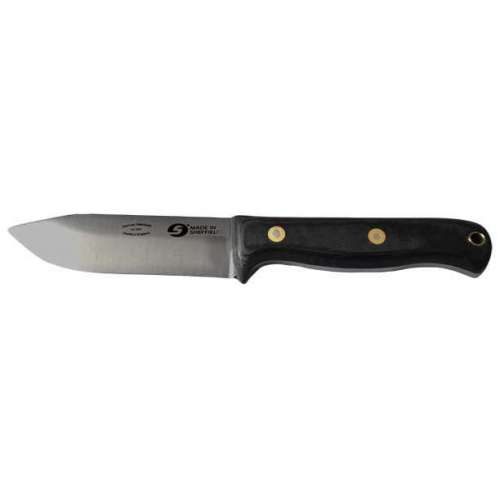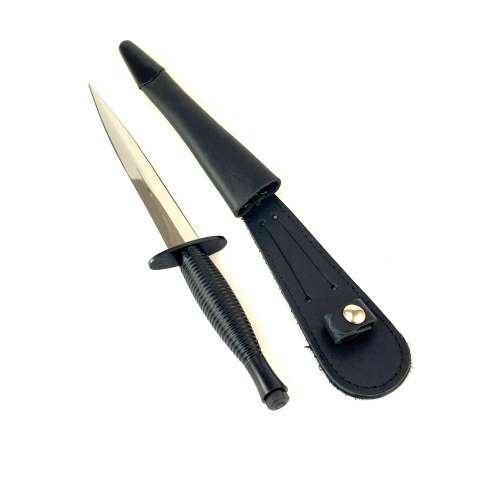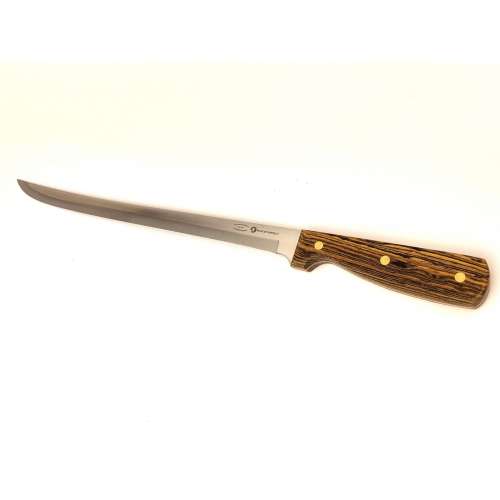No products
Product successfully added to your shopping cart
There are 0 items in your cart. There is 1 item in your cart.
Also known as the British Commando knife, the Fairbairn Sykes commando knife is a double-edged knife with a foil grip. It was developed by William Ewart Fairbairn and Eric Anthony Sykes before World War II. The knife was made famous during the War when issued to British Commandos, including the SAS. Although the Fairbairn-Sykes knife is now of interest mainly to collectors, its sleek lines and commando associations means it still remains in production today.
The balance of a Fairbairn-Sykes is a crucial part of the design and it takes careful forging and production to ensure that the knife balances exactly as designed. The hilt should fit easily in the hand and the blade should not be so heavy that it tends to drag the hilt from the fingers in a loose grip.
Interestingly, during World War II, Samuel Staniforth was one of the original companies forging high quality Fairbairn-Sykes knives for use by the allied forces. Today, Scorpion Knives is still able to offer Fairbairn-Sykes knives for enthusiasts in partnership with Egginton Bros Ltd. Our Fairbairn-Sykes commando knife is manufactured in Sheffield with a precision that ensures you receive a perfectly balanced knife worthy of your collection.
Specification
Overall length: 111⁄2" (29cm)
Weight: 9 ounces (260g)
Blade length: 7" (18cm)
Blade thickness: 3⁄16" (5mm)
Blade material: 1075 carbon steel (CS80)
Blade hardness: HRC 51
Sheath: Leather
Lanyard: No
Fairbairn Sykes FAQs
What Was The Fairbairn Sykes Knife Used For?
Introduced in 1941, Fairbairn and Sykes designed this commando knife to strike at the vulnerable parts of an opponent's body, especially the vital organs. Due to its effectiveness, the knife quickly became a favourite of British commandos.
How Has The Fairbairn Sykes Knife Developed?
Whilst many have attempted to streamline the manufacturing process, the original technical complexity and attention to detail in the 1940 prototype means that the original FS fighting knife still maintains its position as Britain's most iconic knife ever produced. Reviving the original patterns (1st-3rd), Fairbairn Sykes remains Britain’s premier knife for both those who know its history as well as those who are inspired by its craftsmanship and utility.
What Is The Width of The Blade on a Fairbairn Sykes Knife?
The normal blade length for a Fairbairn Sykes is between 6 ¼” (at its shortest) to 7” (at its longest) with the average length typically around 6 ¾” to 6 ⅞”.
What Are The Different Knife Patterns?
Over time, the Fairbairn Sykes knife has undergone various changes. Here’s everything you need to know about the development of this combat knife:
First Pattern - This Fairbairn Sykes fighting knife was introduced in 1940 and produced by Wilkinson Sword. It is a double edged dagger blade with a medial ridge. Because the blade was grounded by hand, it is difficult to find two blades with the same shape and size.
Second Pattern - This Fairbairn Sykes knife was produced in 1941. Normally these 2nd Pattern knives are not marked with any name or mark referring to the manufacturer.
Third Pattern - This Fairbairn Sykes knife was produced in 1942. To support the demand for faster and cheaper production, a new cast grip was produced. It is thought to be the design of the Joseph Rodgers firm, of Sheffield. By this time more than 100 different companies made and/or sold the Commando knives.
**Please Note - These replica knives are not intended for combat use.
How To Maintain Your Fairbairn Sykes Knife?
Our top tips for maintaining your Fairbairn Sykes knife -
Avoid storing your knife in its scabbard or sheath. Leather will always hold moisture and this will eventually have a negative and unwanted effect on the blade.
Never use an abrasive cleaner or polish. However ‘gentle’, this will eventually remove and/or damage the finish.
The only cleaner we would recommend is Renaissance Wax. This product was developed by the British Museum and will not harm your knife or scabbard. You can then use a soft toothbrush to get into difficult to reach areas.
We recommend wearing cotton gloves to clean your combat knife. This way, you can prevent the natural harmful oils in your skin from leaving an unwanted residue.
Do I Need To Sharpen My Fairbairn Sykes Knife?
No. You do not need to sharpen your Fairbairn Sykes knife. This is because it is a stabbing knife, not a slicing knife and is therefore not made with a razor sharp edge.
| Blade Lengths Available | 7" (17.5cm) |
Reviews
No customer reviews for the moment.
Customers who bought this product also bought:
15 other products in the same category:






